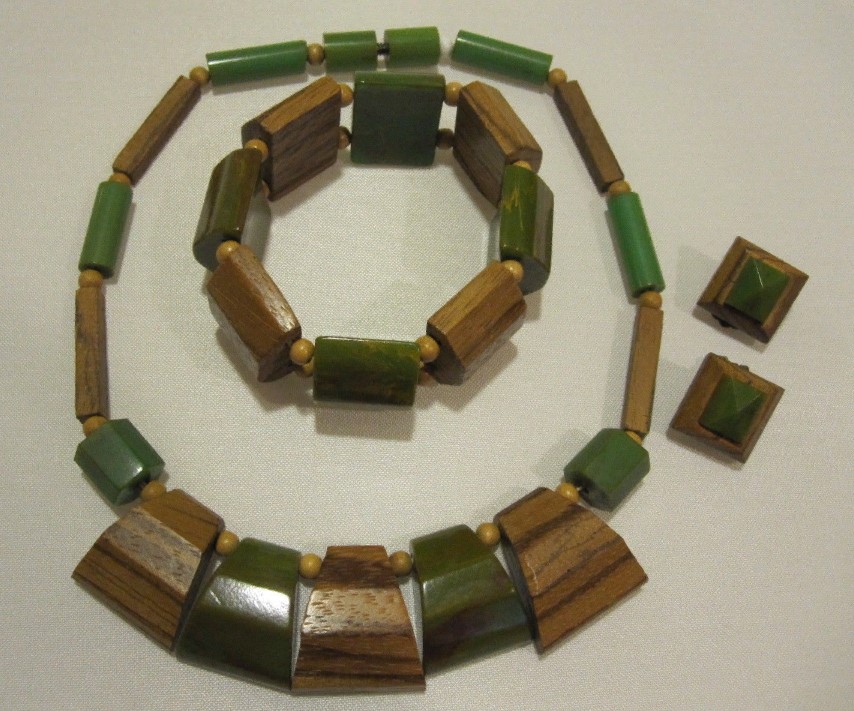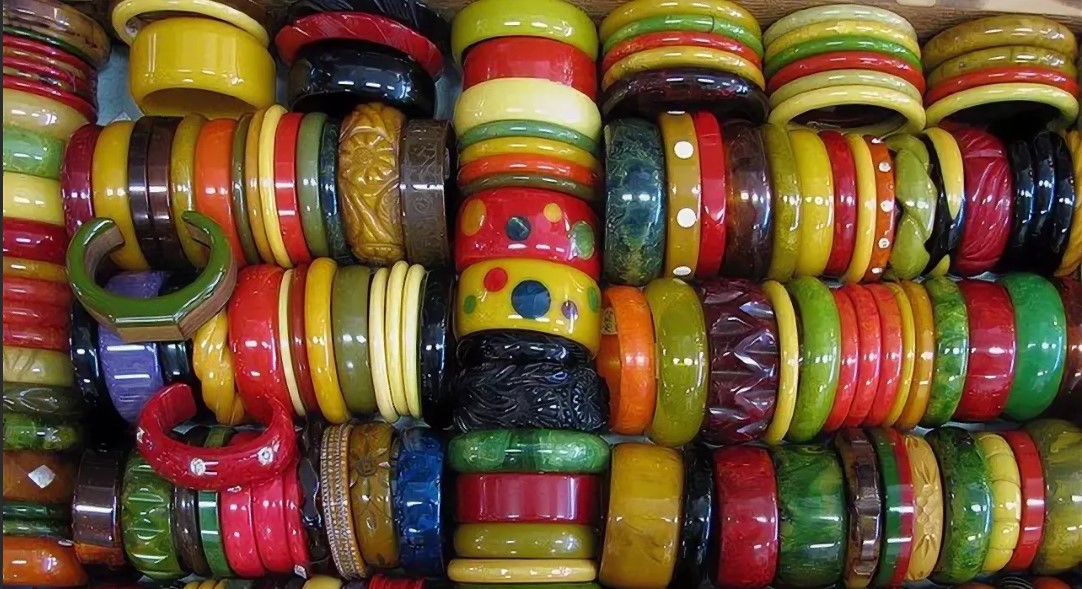 The heat-resistant polymer Bakelite is essentially a highly vulcanized rubber. In appearance, this material can resemble amber, ebonite, lucite and celluloid. The high popularity of bakelite these days is explained by the fact that it is an extremely light, fairly durable and textured polymer.
The heat-resistant polymer Bakelite is essentially a highly vulcanized rubber. In appearance, this material can resemble amber, ebonite, lucite and celluloid. The high popularity of bakelite these days is explained by the fact that it is an extremely light, fairly durable and textured polymer.
Who invented Bakelite?
This polymer was invented by Leo Baekeland - American chemist and inventor of Belgian origin.

Products made from this material gained particular popularity in the 1930-1940s, when the range of color palettes was significantly diversified. This interested many jewelry manufacturers.

Over time and Coco Chanel began to offer customers elegant and original products made of fairly strong and heat-resistant plastic.
Reference! The Bakelite formula was patented by Leo Baekeland in 1909.
Definition
Bakelite is a material of artificial origin, which is the first from varieties of plastic. It is the first true synthetic polymer that is insoluble in alcohol. During the production of such material, condensation of formaldehyde resins with phenols occurs in the presence of alkali.

As a result, raw materials are formed the palette of shades varies from light yellow to black.
Features of bakelite jewelry
Initially, this material was used only for industrial purposes. But after some time, jewelers discovered that, due to its light weight and incredibly bright colors, this polymer can be an excellent material for making inexpensive necklaces, brooches, rings, bracelets, buckles, as well as other accessories and jewelry.

Application of bakelite – radio housing
This material was ideal for the Art Deco style, which was quite popular in the late 1920s and early 1930s, characterized by a predominance of geometric shapes, right angles and lines.

Reference! Bakelite can successfully imitate a variety of textures: turtle shell, coral, ivory. In addition, this material perfectly imitates the texture of stone. What may at first glance appear to be malachite, jade or jasper may ultimately turn out to be plastic.

Shades of jewelry have acquired names
This polymer was chosen as a raw material suitable for the manufacture of various types of jewelry for a number of objective reasons. During processing, such material can be cut and ground. Thanks to this, quite original brooches, bracelets and beads can be made from this type of plastic.

Various techniques were used: from full carving to minor scratching of the surface. Carvings made from this material may have deep grooves and grooves.

The color palette is no less interesting. Certain shades of jewelry even acquired appropriate names:
- Stardust - “Star dust” (not produced after the 30s).
- Butterscotch - “Iris” (produced exclusively in the 30s).
- EndofDay - “End of the day” (a shade obtained by combining the remains of raw materials in one container at the end of the day).
- Creamed Corn - “Whipped corn.”
- Egg Yolk - “Egg yolk.”
- Salmon - “Salmon”.
 Marble colors:
Marble colors:
- Creamed Spinach - “Whipped spinach.”
- Mississippi Mud - “Mississippi Mud.”
- Chocolate Sundae - “Chocolate ice cream.”

Translucent Bakelite:
- Cherry Juice - “Cherry juice”.
- Root Beer - "Rootbeer" (fizzy drink made from herbs and roots).
- Lime Jell-O - “Lime Jell-O.”

Some products made from this material are made from single pieces of one shade, others from combined colored parts.

Layers of different shades are sometimes combined in a zigzag pattern, sometimes horizontally. The jewelry made in this way is then laminated with a special glue and polished as a single unit.
Tips on how to easily distinguish bakelite jewelry
Currently, there are many fakes and copies of jewelry made from this material.

Distinguish real Bakelite from fake not that hard:
- Jewelry made from this material makes a characteristic sound when struck against each other.. You can be guided by this sound when choosing appropriate jewelry.
- Bakelite products will have more weight, rather than jewelry made of celluloid and lucite that are identical in size.
- If you place a decoration made of such material under running hot running water, will appear characteristic odor of formaldehyde.
- The authenticity of a Bakelite product can be checked using a cotton swab dipped in solvent No. 409. If you rub it on the reverse side of the jewelry, a yellow stain will appear on the bakelite product. But if the jewelry is varnished, this method of checking will not work.
- You can also carry out the test using a special cream “Simichrome Polish”. To do this, apply a small amount of cream to a cotton swab and rub the surface of the product. If the item is made of bakelite, the stick will acquire a yellowish tint. But as in the case of solvent, this method is not suitable for products coated with varnish.

Advice! Bakelite products must be stored in a dark place, as they can change color over time when exposed to sunlight.
Modern craftsmen are attracted by the rich color palette of bakelite. It is enough to add the necessary pigment to the base mixture and the result can be orange, red, green, blue or brown. In addition, due to the lightness of this material, bakelite earrings do not pull on the ears, and beads do not put pressure on the neck.


 0
0





